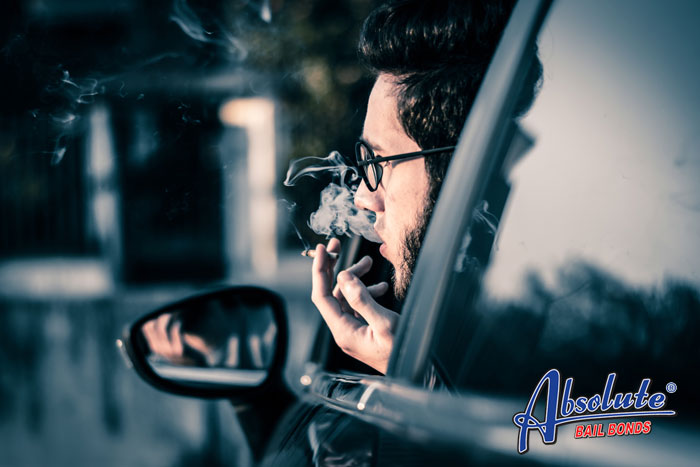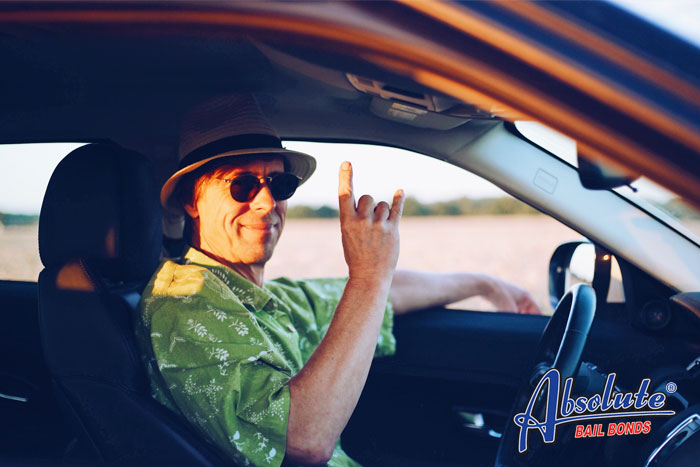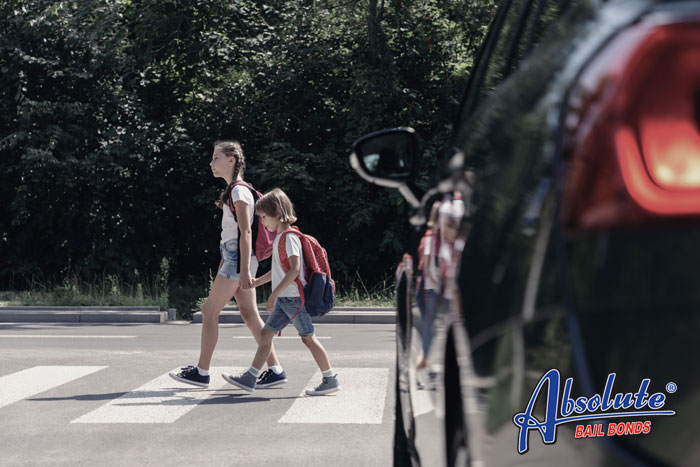
Child Endangerment in California
California’s lawmakers believe that adults have a moral and legal responsibility to protect children. Failing to do so can put you on the wrong side of the law.
The California Penal Code 273a PC deals with the issue of child endangerment.
The interesting thing about Penal Code 273a PC is that while it deals with child endangerment, it isn’t the same law that defines child abuse.
The idea behind child endangerment is that the episode is often a single episode. It doesn’t always involve a child getting hurt, but rather addresses the fact that a child, which according to the California legal system is anyone under the age of 18, could have been hurt or killed as a direct result of your actions. Getting behind the wheel and driving drunk while your passenger is a minor is a good example of a child endangerment case.
Additional examples of child endangerment include:
- Hiring the services of a babysitter who has an abusive past
- Exposing your child to a dangerous animal
- Failing to notice that your child is playing in the middle of a busy road
- Leaving a firearm laying around the house while a child is present
Many parents don’t realize that in extreme cases, failing to seek medical assistance for a child who is for an extremely sick or badly injured child can be considered child endangerment.
Just because you’ve been accused of child abuse and the case has gone to trial, it doesn’t mean you’ll be sent to jail.
In order to be convicted of child endangerment in California, the prosecutor has to effectively prove that you knew there was a chance that your actions (or lack of action) created a situation where the child was in danger.
Defenses that have been successfully used in child endangerment cases include:
- You couldn’t have known that the child was potentially in danger
- The child wasn’t your responsibility
- You were falsely accused (false accusations of child endangerment aren’t uncommon in cases that also involve a custody dispute)
- The endangerment was completely accidental
You’ll be surprised to learn that child endangerment is one of California’s wobbler laws. The details of the case determine if you’re charged/convicted of a misdemeanor or a felony.
If there was a chance that the situation could have resulted in death or extreme injuries to the child, you should expect the prosecutor to pursue felony child endangerment charges.
If you’re convicted, the potential consequences could include:
- A fine that doesn’t exceed $10,000
- Getting sentenced to anywhere from 2 to six years on a state prison
If it doesn’t appear that the child could have been severely injured or died as a result of your actions, the prosecutor will go after a misdemeanor charge.
If you’re convicted, you could:
- Be sentenced to up to one year in the county jail
- Be charged a fine that doesn’t exceed $1,000
The best way to avoid child endangerment charges in California is using common sense and avoid dangerous situations whenever possible.

Riding a Noisy Motorcycle in California
There was a time when riding a noisy motorcycle in California meant you might get issue a fix-it ticket. While the ticket was irritating, it was also easily correctable. All you had to do was take your motorcycle to a mechanic, have the noise adjusted, prove you changed things, and the ticket went away.
That changed in 2019 when lawmakers decided that there were too many noisy motorcycles on California’s highways. Since the law passed, if you’re motorcycle is considered too loud, you’ll still be issued a ticket, but adjusting the noise won’t make the fine disappear. Whether you have your bike repaired or not, you’ll have to pay a substantial amount of money to the court system.
While you might love a good loud rumbling exhaust while you’re zooming down California’s highways, that sound could really hurt your budget. If you’re issued an excessive noise ticket, the fine could be $1,000.
Don’t assume that as long as you pay the fine, you have nothing to worry about. It’s possible that you’ll be told that you need to do something to make your bike quieter. Plus, you’ll continue collecting tickets and fines until the noise issue is resolved.
Unless you’re riding a motorcycle that was made prior to 1985, the maximum amount of noise you’re bike can make while on public roads is 80 dB. To help you stay within this parameter, you’re not allowed to modify your exhaust with after-market parts which are often designed to exceed 80 dB. If you have to replace your bike’s exhaust system, you want to stick to parts that are EPA certified. Stay away from anything that says it’s for off-road or racing use as these are generally significantly louder than 80 dB.
If you are pulled over because the officer believes your bike is too loud and you disagree, it’s in your best interest to use the video function on your phone to record your bike right after the ticket is written. This will provide you with a way to verify exactly how loud your machine was at the time. If it was less than 80 dB, you can fight the ticket and likely get out of paying the excessive noise fine.
Whether you intend to fight the ticket or simply pay the fine, it’s in your best interest to resolve the matter as quickly as possible. If you wait too long to handle the situation, additional fees could be attached to the ticket and you may even lose your license.

Smoking and Driving
Somewhere along the way, a rumor started to spread. The rumor was that you couldn’t legally smoke and drive a car. This has alarmed many drivers who find that smoking helps them relax and pass the time while they’re stuck in traffic. It’s also likely resulted in the police fielding many calls from concerned motorists who report other drivers smoking while behind the wheel.
The Truth About Smoking and Driving
In California, there aren’t any current laws that prohibit you from smoking or vaping while you’re behind the wheel. That doesn’t mean that you absolutely won’t ever get into trouble for the act.
While a patrol officer can’t simply pull you over and issue a citation because you were smoking a cigarette, if you’re smoking causes you to weave all over the road, miss a traffic sign, or do something dangerous, you will likely be pulled over and issued a distracted driving ticket.
If you get into an accident because you were distracted by your cigarette, you’ll be responsible and likely ticketed.
Littering is another way that you can get into trouble for smoking while driving. If you’re caught flicking your cigarette butt out of your window while driving, an officer could decide to issue a littering ticket. If the ash from the cigarette you flicked out the window lands on something flammable and starts a fire, you could face additional legal and civil charges.
You’re Cigarette Could Get You Into Trouble Even if You’re Not Driving
Yes, you’re allowed to drive and smoke a cigarette, however, that same cigarette could get you into trouble if you’re car is parked. If you’re parked in a parking lot of a building where smoking is prohibited, such as a school, you can be issued a substantial fine. If you see a no-smoking sign, it’s in your best interest to park somewhere else or to keep your cigarettes locked in your glove box until you’re back on the road.
You Can Legally Smoke Tobacco but Not Weed While Driving
While you’re legally allowed to enjoy tobacco products and vaping in your car, things change if you’re using marijuana. At the moment, lawmakers view weed much like they do alcohol. You’re allowed to use it, but you have to be sensible. That means you can’t drive after you’ve smoked weed. You’re also not allowed to smoke weed (or consume products laced with marijuana) while driving.
If you’re transporting marijuana, make sure it remains tightly packaged until you’ve reached your destination.

The Truth About Carpool Cheating
The rules seem simple enough. If you are the only person in your vehicle, you must stick to a certain lane of traffic. If you’re carrying multiple people in your car, you’re free to use the carpool lane which typically travels at a significantly faster speed. The system is designed to encourage people to carpool whenever possible.
The problem with the system is that there are always a few people who decide the rules don’t apply to them and they zip along in the carpool lane even though they’re the only person in the vehicle. There are even people who go so far as to strap a mannequin into the passenger seat so that the cops think that they’re legally driving in the carpool lane.
In 2016, ABC 7 News reported that the Metropolitan Traffic Commission had conducted a study that revealed during afternoon and evening hours, 19% of the drivers in the carpool lane are carpool cheaters. The number of cheaters rose significantly during the morning rush hour when an estimated 24 percent of vehicles in the carpool lane only had a single driver.
The results of the study aren’t being taken lightly.
“Our fear is that the cheat level gets so high that everyone feels the only people not in the carpool lanes are chumps,” said Randy Rentschler, a spokesman for the Metropolitan Transportation Commission.
The numbers indicate that highway patrol officers simply aren’t catching enough carpool cheaters. If enough of the cheaters got caught and issued the surprisingly heavy carpool cheating ticket they would decide that they’re better off sticking to the slow lane. Until the odds of getting caught cheating grow worse, people are going to continue to look for creative ways that they can drive in the faster carpool lane.
A perfect example of this is a gentleman who was recently busted, time, cheating in the carpool lane. Bay Area police pulled over a Ford SUV that was zipping along in the carpool lane. Once the driver was pulled over, it became obvious that there was something strange about the passengers. A closer inspection revealed that they were nothing more than coats that had been stuffed with a variety of items.
The driver was issued a ticket.
The California Highway Patrol isn’t fooling around when it comes to carpool cheaters. The ticket a first-time offender receives is a staggering $490. If you get caught again, the fine increases. This was the fourth time the Bay Area driver in the Ford SUV had been pulled over.
Carpool cheaters are a good source of income for the California Highway Patrol. In 2017, the state collected approximately $350,000 from carpool cheaters.

Spring Break is Coming! Know What an Underage Drinking Charge Will Cost you
Spring break is finally here! It’s time to cut loose, forget all about your studies, and have a good time.
While there’s nothing wrong with relaxing and enjoying yourself, don’t forget that you’re not allowed to drink alcohol until you’re twenty-one years old. If you choose to ignore this, an underage drinking charge won’t just ruin your spring break, it will also have a negative impact on your life over the next few years.
It doesn’t matter if you’re pulled over for speeding or if the cops show up at a party, if your blood alcohol content is over .05 and you’re under twenty-one, you’ll find yourself on the wrong side of the law.
For the record, a single beer is all it takes to put you over .05.
The days when an underage drinking charge resulted in a difficult phone call to your parents and some community service time are long over. California lawmakers have decided to crackdown on underage drinking during spring break.
The first time you get caught drinking while you’re underage, the potential consequences are:
- Serving 24-32 hours of community service
- A $250 fine
- Attending an alcohol education program
Each time you’re caught drinking while underage after the first conviction, the consequences are:
- 36-48 hours of community service
- A $500 fine
- A one-year drivers license suspension
The very first time you’re caught drinking and driving while underage, the potential consequences can include:
- Spending at least 48 hours in jail
- Spending 3 years on probation
- Lowing your good driver status for 10 full years (this will lead to significantly higher insurance premiums)
- 2 points getting added to your current driving record
Some California counties will also install an ignition lock on any vehicles that are registered in your name.
It’s important to remember that minors aren’t the only ones who can get into trouble for underage drinking. Anyone who allows minors to drink will also find themselves on the wrong side of the law.
Parents who allow their children to consume alcohol while at home can get into serious trouble if that child is caught behind the wheel while under the influence. A guilty conviction of letting a minor drive while intoxicated includes a one-year jail sentence and a $1,000.
If the court decides that you’ve contributed to the delinquency of a minor, they can hit you with a one-year jail sentence and a $2,500 fine.
Businesses that serve alcohol to minors face a misdemeanor charge that can include a year in jail and a $1,000 fine. The charge can also jeopardize their business license.
It is in everyone’s best interest to remember that alcohol and minors shouldn’t mix this spring break.

The Cost of Ignoring School Zone Traffic Laws in California
Kids are finally starting to return to school in California which means it’s time for drivers to reacquaint themselves with school zone traffic laws. It’s extremely important that you not only know that the laws exist but also the consequences of breaking the school zone traffic laws.
School zones are designated areas where there periods of the day where there are multiple kids on foot, parents picking up kids, and school buses present. These things create additional driving hazards. Everyone has to be hypervigilant during these times, particularly if you’re in an area where there a lot of young kids who don’t always remember to look before they dart into traffic.
To keep things as safe as possible, the speed limits are decreased in school zones during key times of the day, usually when people are showing up for school and when they’re leaving.
In most school zones, the speed limit decreases to 25 MPH though there are places where it goes even lower, to 15 mph. Signs in the area not only alert you to the change in speed, but they will also have a note stating that the decreased speed limit goes into effect “when children are present.” Many also have a flashing light attached to the sign which blinks on and off when the police are enforcing the decreased speed limit.
In addition to having these speed limit zones near schools, some cities have also decided to create special speed limit zones near parks and playgrounds.
If you’re entering a school zone, you are expected to be on high alert for slow-moving traffic and lots of unpredictable foot traffic. You should also be prepared for the possibility of cops who have parked in strategic spots while they wait to pull over drivers who fail to obey the decreased speed limit.
If you’re pulled over for speeding in a school zone, don’t expect to talk your way out of the ticket. Patrol officers take the safety of children very seriously and are unlikely to let you off with a warning.
If you get a ticket for speeding in a school zone, you should expect to pay:
- $25 for 1-15 miles per hour over the limit
- $50 for 16-25 miles per hour over the limit
- $100 for 26 miles per hour the limit
It’s important to understand that these fines are the base amount. In most cases, there are additional costs attached to each ticket which will often bring it to over $100. It’s also possible that the officer will decide to attach additional charges to the ticket. These additional charges could include reckless driving, failing to yield, negligence, and even using a cell phone. It’s also possible that they will notice a problem with your insurance or registration.
When all is said and done, it’s best to keep both hands on the wheel, your eyes up, and your foot light on the accelerator while you’re driving through a California school zone. The few extra minutes slowing down adds to your commute will cost you far less than a failure to slow down in a school zone traffic ticket.

Stay Out of Jail This Saint Patrick’s Day
Saint Patrick’s Day is a great holiday. It’s one of those fun holidays where you’re encouraged to cut loose and have a good time. The problem with Saint Patrick’s Day is that it’s also a time when many people get a little too relaxed and end up in jail. Happily, there are things you can do to make sure you enjoy the holiday and also stay on the right side of the law.
Check Out Current Pandemic Restrictions
Last year, Saint Patrick’s Day was interrupted and virtually canceled because of the pandemic. This year it doesn’t look like things will be quite as restricted but that doesn’t mean you’ll be able to do whatever you want. Before heading out, check both state and local restrictions and know exactly what you can and can’t do. Also, make sure you adhere to social distancing guidelines and wear your face mask while you’re in public areas.
Have a Designated Driver
Saint Patrick’s Day is one of the biggest drinking nights of the year. Expect that the cops will be out and that they will be looking for drunk drivers. If you plan on drinking, do the smart thing and have a designated driver on hand. If none of your friends want to be the DD at least arrange for a rideshare program or cab to take you wherever you want to go.
The best way to avoid the temptation of getting behind the wheel after you’ve been drinking is leaving your car at home and getting a ride both to and from your favorite bar.
Don’t Lose Your Head
While drunk driving makes up the bulk of Saint Patrick’s Day arrests, it’s not the only thing that can result in your spending a night in jail. Other common arrests during the holiday include drunk and disorderly, assault, and public intoxication charges. If you’re prone to drinking to the point where you lose all your inhibitions and do things you’ll regret, either bring a friend along who will remain levelheaded and prevent you from doing something you shouldn’t or restrict your celebrating to your home.
Stay safe and use good judgment this Saint Patrick’s Day!

Crimes of Passion
There is something about the term “crime of passion” that causes many of us to think about romance and true love. The reality is that crimes of passion are not about showering a loved one with flowers and chocolate. Victims of crimes of passion will tell you that they are actually terrifying, life-altering acts that have more to do with fear than love.
What are Crimes of Passion
The legal definition of a crime of passion is, “a defendant’s excuse for committing a crime due to sudden anger or heartbreak, to eliminate the element of premeditation.”
A suspect is never charged with a crime of passion. That phrase is primarily used by the media and defense attorneys. In most cases, people who have committed “crimes of passion” are actually charged with murder, assault, or sexual assault.
Why so Many Use the Crime of Passion Defense
There are two reasons so many people use the crime of passion excuse. The first is to eliminate the idea that the crime was premeditated. If the prosecutor is convinced that the crime was premeditated and they feel they can prove it in court, the charges, and resulting penalties, will be far more severe than if you are found guilty of acting in the heat of the moment.
For example, for the prosecution to pursue a case of premeditated murder, the lawyer has to prove the suspect didn’t just think about murdering the victim, but actively planned out the details. Failing to prove this could cost the prosecutor the case.
Another reason defense attorneys like to use the phrase “crime of passion” while defending a suspect is because it’s a great way to convince the jury to put themselves in the accused shoes. The lawyer is basically asking each jury member to put themselves in the suspect’s shoes and imagine how they would feel if they were in the same situation. In some situations this can sway the jury, causing them to find the defendant not guilty.
It’s worth noting that California has an interesting take on crimes of passion that result in murder. In California, the defense not only has to prove that the murder was a crime of passion, but they also have to prove that the defendant was experiencing emotional turmoil at the time. The way the law is written makes it difficult for an attorney to use the crime of passion defense in cases that involve revenge.



